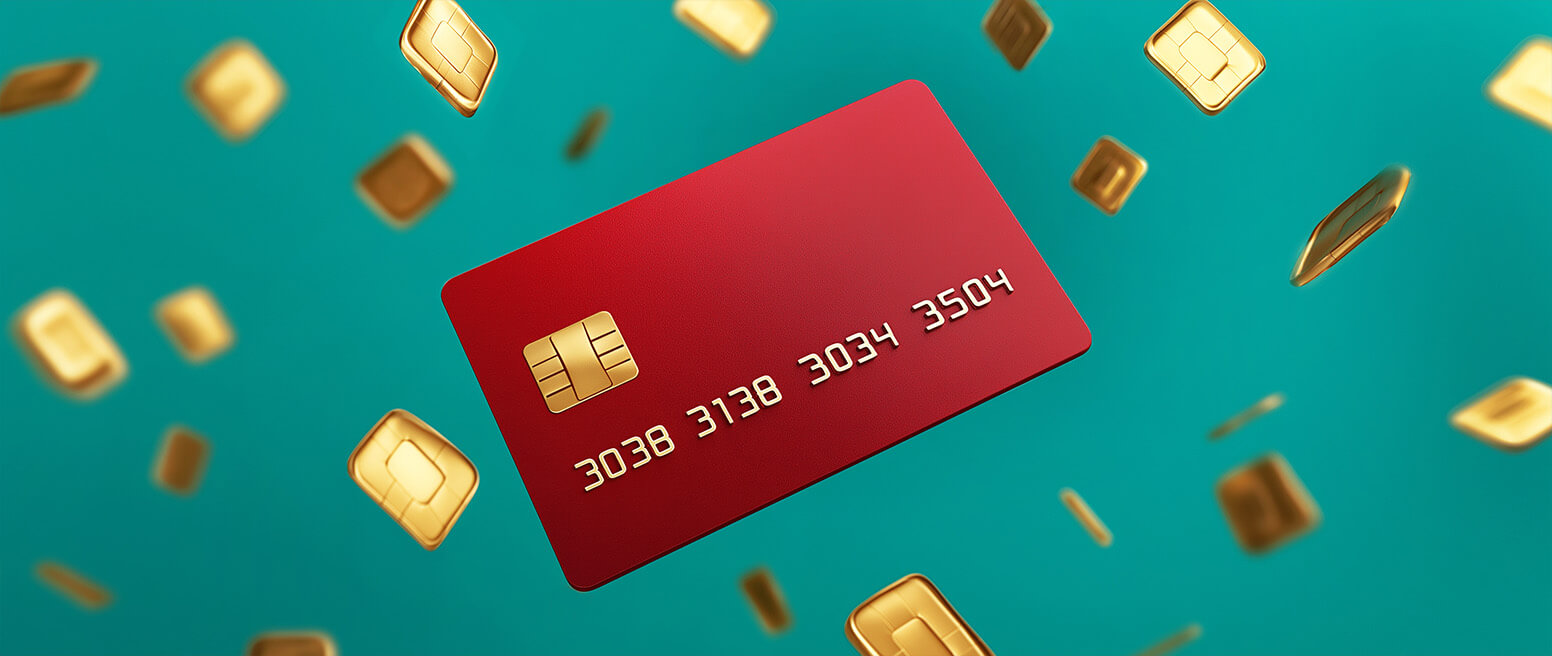Biometric Payments: What Are They? How Secure is the Technology?
Biometric payment systems were not widely popular in the West until very recently. However, contactless payment technology has taken off in the US in the wake of the Covid-19 pandemic, and adoption doesn't appear to be slowing in the least. With new shopping channels and payment preferences comes the need for new verification methods.
The technology boasts some of the most advanced security features on the market today. It’s all but guaranteed to pull the rug from under traditional payment methods…at least once adoption reaches a critical mass, that is.
How can you take advantage of the many business benefits of biometric payment technology, without the hang ups? Let's talk about it.
Recommended reading
- What is EMV Bypass Cloning? Are Chip Cards Still Secure?
- Dispute Apple Pay Transaction: How Does The Process Work?
- Terminal ID Number (TID): What is it? What Does it Do?
- Point of Sale Systems: How to Get More From Your POS Machine
- What is EMV Technology? Definition, Uses, Examples, & More
- Visa Installments: How it Works, Benefits, & Implementation
Biometric security tools have countless potential applications. They can be used for anything from authorizing consumer payments to providing access to secured buildings. Biometrics can even help identify a suspect in a criminal investigation.
Electronic Payments: 3 Factors of Verification
Before we go any further, we should probably make this point clear. All methods of validating a user's identity in a transaction are based on one of three authentication factors:
Knowledge factors are something you know, like a password or a security question. This security factor is considered to be the least secure of the three, since it can be compromised via techniques like phishing, social engineering, brute force attacks, card skimming, and formjacking.
Ownership factors are things you possess, such as a credit card, debit card, or mobile device. This factor is more secure; to compromise it, fraudsters must be in physical possession of the item you own. But, ownership factors are still vulnerable to fraud, since scammers can still steal or hijack your phone or nab your payment card.
Inherence factors are characteristics that are intrinsic to the buyer, like a fingerprint, iris, facial features, or voice. In other words: biometrics. This is the most secure of the three authentication factors since it’s based on the buyer’s biological characteristics, which are difficult to forge, duplicate, or steal.
The fact that ownership factors are more secure than knowledge factors is why card-present transactions — which require the cardholder and their payment method to be physically present at the point of sale — are less risky than card-not-present transactions, which are conducted remotely.
What are Biometric Payments?
- Biometric Payments
Biometric payments are transactions which employ biometric indicators like fingerprints, facial recognition, iris recognition, or heart rhythm to verify buyers’ identities during the transcription process.
[noun]/* bī • ō • met • rik • pā • məntz/
So, what biometric payment methods are currently available to authenticate eCommerce purchases? Below, we've compiled five of the most promising technologies for the payment space, and provided an overview of how they work:
How Do Biometric Payments Work?
Like I just discussed, there are a number of different biometric indicators that could be used to validate a buyer’s identity. But, to try and illustrate how biometric payments work, let’s breakdown the process for a typical fingerprint-authenticated transaction:
Where are Biometric Payments Being Used Now?
Biometric payment systems are rapidly growing due to advancements in technology, increased smartphone adoption, and a demand for secure, convenient payment methods. With a projected market value of $34.8 billion by 2032, these systems are being embraced globally, particularly in China and among younger generations, though older consumers are also increasingly adopting the technology for its security and efficiency.
Biometric payment systems have gained traction globally due to convenience, technological advancements, and high smartphone usage. A report by Fortune Business Insights reveals that the value of the biometric payment market could expand to $34.8 billion by 2032. That’s a fourfold increase from the $9.91 billion figure notched in 2024.
Financial institutions and card networks like Visa and Mastercard are already incorporating biometric features in their services. Mobile payments also rely heavily on biometric authentication; more than 80% of smartphones today have biometric features, which are enabling quicker and more secure transactions.
China is taking the lead on this front. Data from iiMedia Research shows that 968.9 million people in the country used mobile payments in the first half of 2024. That’s up more than 46% from the 661 million people using mobile payments in the first six months of 2019.
That said, the United States and the rest of the world are beginning to catch up:
Between 2024 and 2034, the global contactless payment market is expected to grow at an annualized rate of 16.0%.
Contactless payments could become a $71 billion market in the United States by 2034.
consumers
More than one-third of American consumers have already used biometric technology to checkout, and 52% say they would be willing to use it if it were more widely available.

Younger, digital-native consumers may also be more receptive towards biometric payments. An estimated 79% of Gen Z shoppers in the US already transact using digital wallets like Apple Pay and Samsung Pay, both of which default to biometric authentication.
But, older consumers are warming up towards biometrics, too. Convenience and heightened security are two factors driving acceptance, as is a faster and more frictionless checkout experience.
Trends in Biometric Payments by Region
North America
The presence of major technology companies and financial institutions, along with high consumer awareness, has propelled adoption. The US holds a significant portion of current market share (31.9% of global biometric payments).
Latin America
The region is experiencing a fintech boom, with significant growth in payment card usage and contactless payments. For instance, Brazil saw an amazing 469.6% increase in contactless payment value between 2019 and 2020.
Europe
Strong regulatory frameworks and widespread acceptance of biometric technologies have facilitated growth. Countries like the UK, Germany, and France are leading in adoption. In fact, survey data shows that 70% of consumers in the UK are prepared to use biometric payment cards, preferring fingerprint authentication over PINs.
Middle East & Africa
The region is witnessing growth due to the expansion of eCommerce and the need for secure online payment methods. 94% of consumers in Saudi Arabia and 86% in South Africa expressed readiness to use biometric payment cards, and given the high degree of mobile device penetration, this region could be a biometrics hotspot in coming years.
Asia-Pacific
China is a global leader in biometric-authorized payments, with mobile payment markets rapidly transforming and cash becoming less common in urban areas. In 2021, Asia-Pacific held about 25.6% of the global biometric payment market, though that number has increased since.
Advantages of Biometric Payments
Like we mentioned above, biometric payment technology is more advanced and secure than traditional ownership- or knowledge-based security. It’s considerably more difficult for fraudsters to access and replicate than previous security measures.
Beyond being more secure, biometric payment technology offers several other advantages as well. These include:
Common Objections to Biometrics
There are a few downsides to biometric payments, including a lack of widespread hardware availability, privacy concerns, the costs of implementation, edge cases, and fraud blindspots.
So, if biometric payments offer considerable benefits, why aren't they used in every transaction? Well, despite all the potential benefits of adopting biometric security, the technology still features several issues and weak points. You should be aware of a few drawbacks before you act:
Use More Than One Authentication Tool
No single tool can be 100% effective. Biometric security practices can still be defeated through several authentication spoofing tactics. Having a mix of multiple tactics can increase your odds of success.
You may have to experiment to find the right mix. Other fraud tools to consider include CVV verification, AVS, 3DS technology, geolocation, and fraud blacklisting, just to name a few.
Use the Most Comprehensive Data Available
The more data you can cross-reference, the more accurate you can be. Tap into the best data you can find, and use machine learning to constantly fine-tune results.
Keep Records Updated
Your authentication tools are only as good as the information you have on file. Perform regular account checks to update expired details held on-file.
Employ a Prevention Strategy
Biometric payment technology is a powerful fraud prevention tool, but it's only one tactic and affects only one fraud risk source. It won't help against chargebacks or first-party, post-transactional fraud. To fight back, you need a coordinated, carefully planned strategy to make the most of the tools at your disposal.
Conventional fraud detection tools have no impact on threats like friendly fraud. You'll need additional help to deal with this and other threats to your revenue.
Here at Chargebacks911®, we specialize in preventing post-transactional fraud that criminal fraud tools like those listed above can't reach. We work alongside other technologies to provide comprehensive, multilayered fraud defense. Continue below and get a free ROI analysis today.
FAQs
What are examples of biometrics?
Biometric payment technology covers any technology that authenticates users through biometric means. This includes digital fingerprinting, facial recognition, voice recognition, iris scanning, and palm vein mapping, among others.
How safe is biometric security?
Biometric payments are more advanced and secure than traditional card-present and card-not-present transactions. It’s considerably more difficult for fraudsters to access and replicate or spoof biometric indicators than previous security measures.
What is the future of biometric payments?
As biometric authentication becomes cheaper and more accessible, biometric payments will likely become globally widespread, which could enhance transaction security and lower fraud risks.
Are biometrics good or bad?
Biometrics is not inherently good or bad. The technology allows merchants to leverage inherent factors to authenticate buyers, which are difficult to fake and could strengthen transaction security. Some downsides, however, include the high cost of implementing biometric payment systems, along with privacy concerns about where and how biometric data are stored.
Are biometrics required for a credit card purchase?
No, not as yet. That could conceivably change soon. 6 million contactless payment readers utilizing biometric authentication hardware are expected to ship by 2026. So, while you are not required to provide biometric authentication for credit card payments as yet, this is undoubtedly a “wait and see” situation.
Are there disadvantages of biometric systems?
Yes. Biometric payments are considered to be generally more secure than previous methods. However, there are a few potential downsides to consider, including availability, cost, privacy concerns, and other special circumstances (biological impairments, background noise, etc.).














